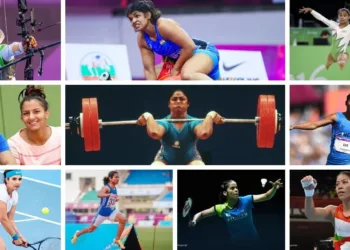India’s thriving online gaming sector is bracing for another major blow as the government considers placing real-money gaming under the proposed 40% GST category reserved for “sin goods” like tobacco and liquor. This potential move could devastate an industry that has already been struggling with the current 28% GST burden.
Table of Contents
The Sin Tax Proposal: What’s on the Table
India’s real-money gaming sector is staring at a fresh tax impact after the government signalled a new GST architecture with a special 40% rate for sin and luxury categories. The issue will be examined by three Groups of Ministers (GoMs), whose recommendations will be sent to the GST Council.
This isn’t just a minor tax adjustment – it’s a fundamental reclassification that could push online gaming from the entertainment sector into the controversial “vice industry” category.

Current vs. Proposed GST Structure
| Category | Current GST Rate | Proposed 40% Impact | Industry Status |
|---|---|---|---|
| Real-Money Gaming | 28% | Potentially 40% | Under GST Council review |
| Skill-Based Games | 28% | May face 40% classification | Awaiting clarification |
| Fantasy Sports | 28% | Could be included in sin goods | High-risk category |
| Casual Mobile Games | 18% | Likely to remain unchanged | Safe zone |
| E-sports Tournaments | 18% | May avoid sin classification | Emerging segment |
Industry’s Current Struggles: Already Under Pressure
The gaming industry hasn’t fully recovered from the 28% GST implementation. GST authorities have collected over Rs 6,909 crore from online gaming, marking a mammoth 412 per cent increase in revenue from the industry over the past six months.
Despite this taxation burden, India’s online gaming market grew by 23% in FY24, showing remarkable resilience. However, industry experts warn that a 40% tax rate could be the breaking point.
Why “Sin Good” Classification Matters
The proposed classification alongside tobacco and liquor sends a clear message about the government’s perception of online gaming. This isn’t just about revenue collection – it’s about social policy and moral positioning.
Implications of Sin Classification:
- Societal stigma attached to gaming businesses
- Reduced investor confidence and funding opportunities
- Potential for additional regulatory restrictions
- Marketing and advertising limitations
The Economic Reality: What 40% GST Means
For Gaming Companies:
- Massive operational cost increase
- Reduced profit margins forcing business model changes
- Potential mass shutdowns of smaller operators
For Players:
- Higher entry fees and reduced prize pools
- Limited gaming options as platforms shut down
- Shift toward unregulated offshore platforms
For the Economy:
- Potential job losses in tech and gaming sectors
- Reduced tax revenue if industry shrinks significantly
- Loss of India’s competitive edge in global gaming market

Government’s Revenue vs. Industry Survival
While the government views gaming as a lucrative tax source, industry stakeholders argue this approach could kill the golden goose. The sector employs thousands of tech professionals and has attracted significant foreign investment.
The challenge lies in balancing revenue generation with industry sustainability. A 40% tax rate could push legitimate operators out of business, potentially driving users toward unregulated platforms that pay no taxes.
Global Context: How India Compares
Most gaming-friendly countries maintain lower tax rates to encourage industry growth and innovation. A 40% rate would make India one of the highest-taxed gaming markets globally, potentially hampering the “Make in India” digital initiative.
What’s Next: The GoM Decision Process
Three Groups of Ministers (GoMs) will examine the issue before sending recommendations to the GST Council. This process could take several months, leaving the industry in uncertainty.
Timeline Expectations:
- GoM deliberations: 2-3 months
- GST Council review: Additional 1-2 months
- Implementation: 6 months after approval
Industry Response: Fighting for Survival
Gaming companies are likely to present detailed impact analyses, employment data, and alternative revenue models to the GoMs. The focus will be on distinguishing skill-based gaming from gambling and highlighting the industry’s contribution to India’s digital economy.
Stay updated with the latest developments in India’s taxation policies and their impact on emerging industries through our business analysis. For comprehensive coverage of government policy changes, explore our politics and governance section.
Official Sources:
Interested in how regulatory changes affect India’s digital economy? Discover more insights in our technology policy coverage and learn about emerging trends in our innovation section.
Frequently Asked Questions
Q: Will all types of online gaming face 40% GST?
A: The classification is still under review by GoMs. Casual mobile games and e-sports may be treated differently from real-money gaming platforms. Skill-based games are fighting to avoid the “sin good” classification altogether.
Q: When will the 40% GST rate be implemented if approved?
A: If the GST Council approves the proposal after GoM recommendations, implementation could take 6-12 months. The industry will likely have a transition period to adjust to new rates and compliance requirements.








